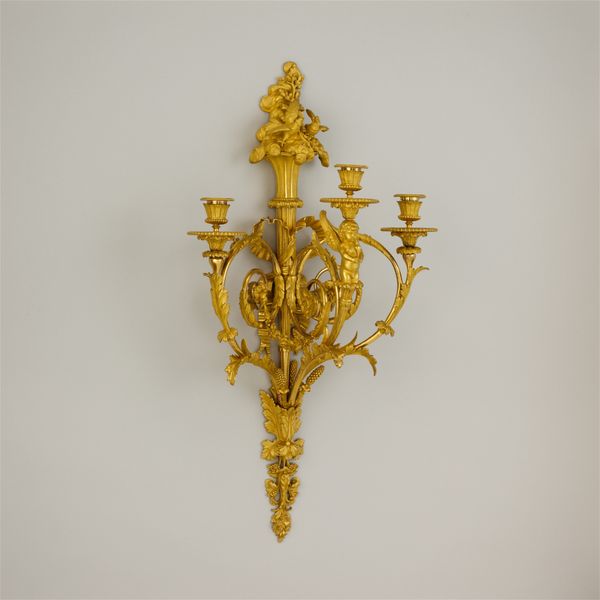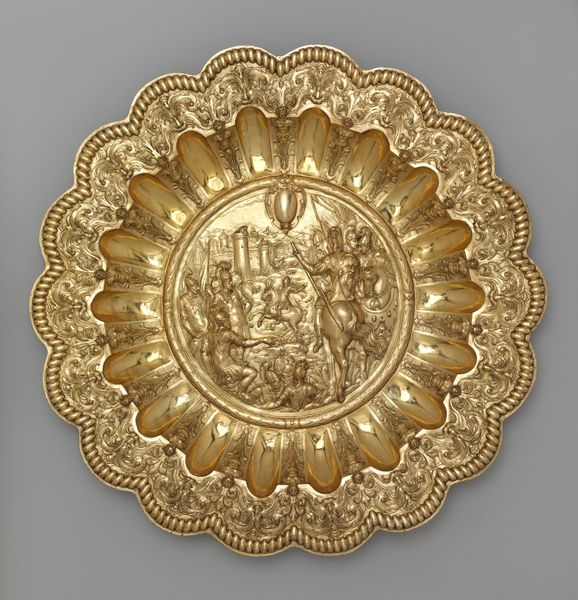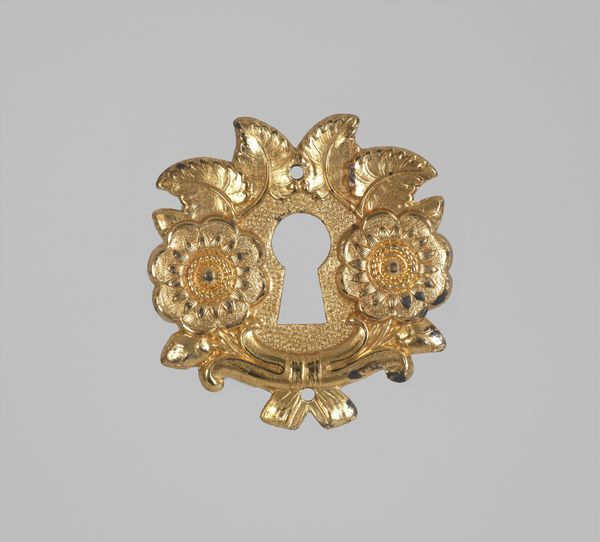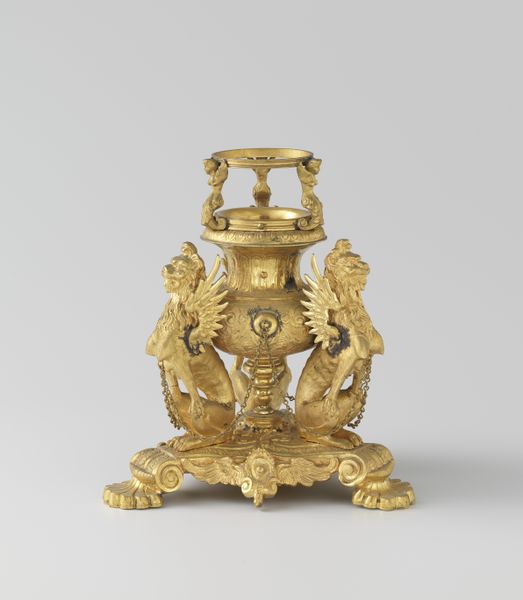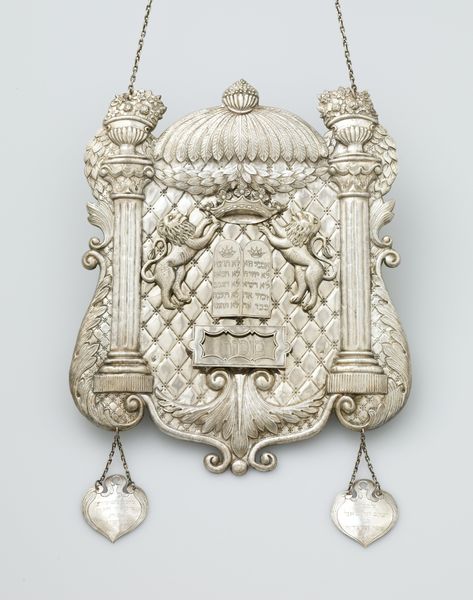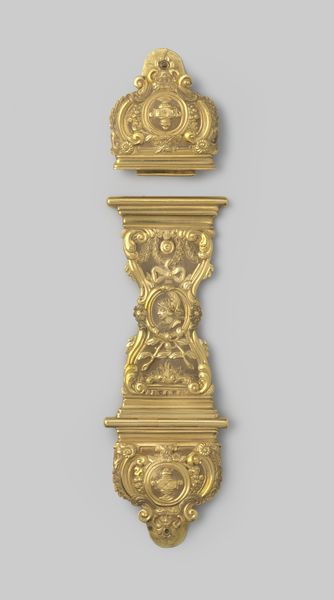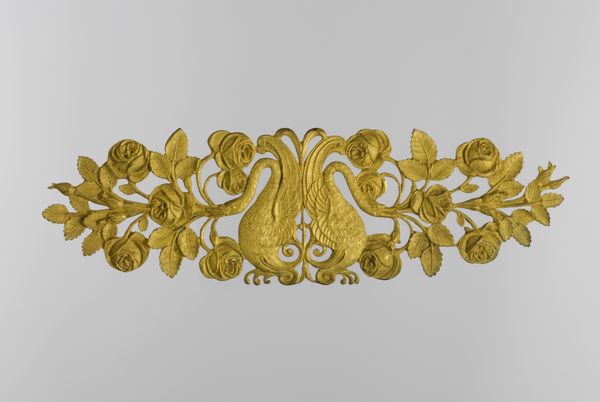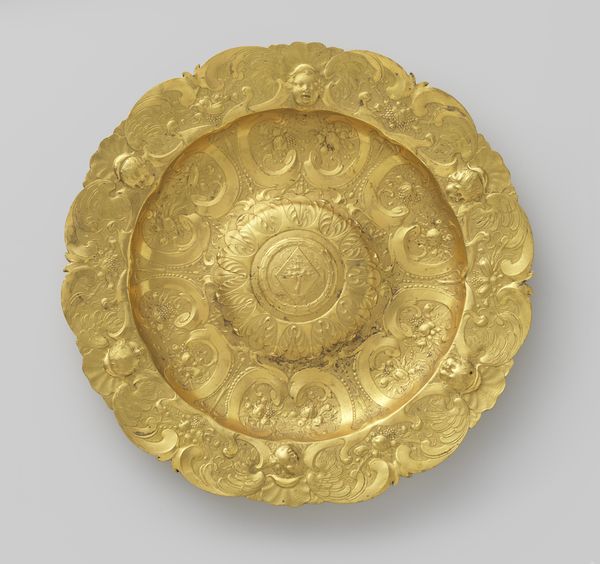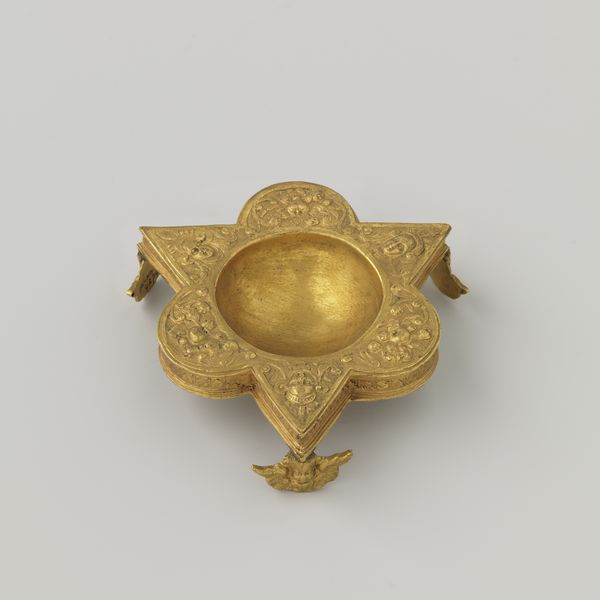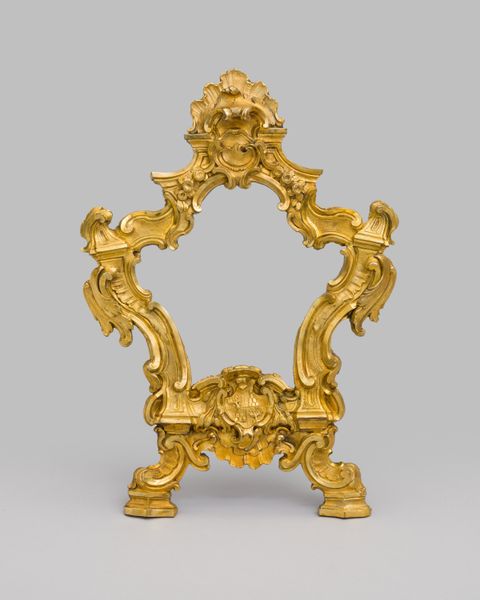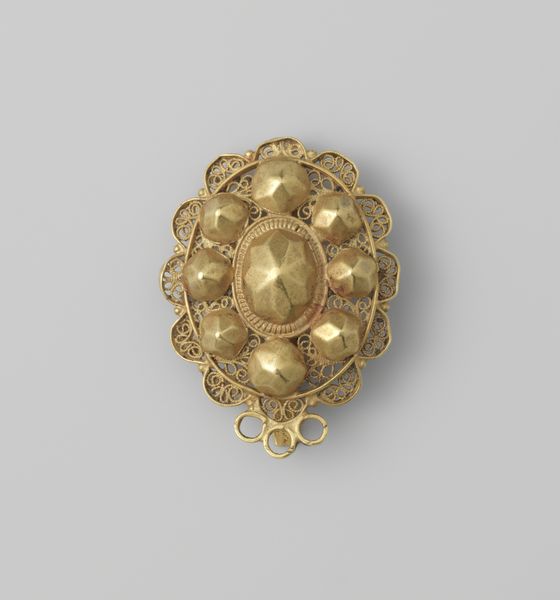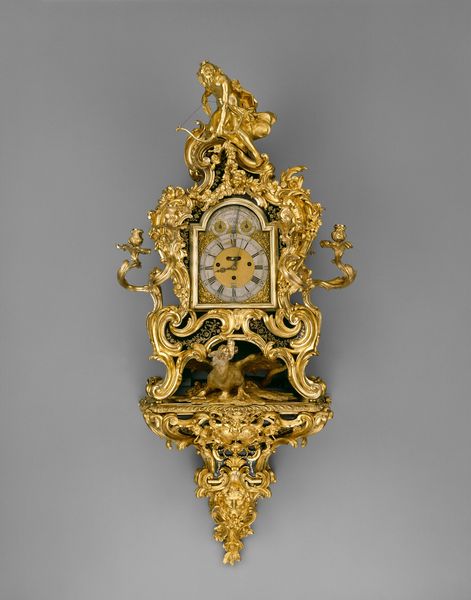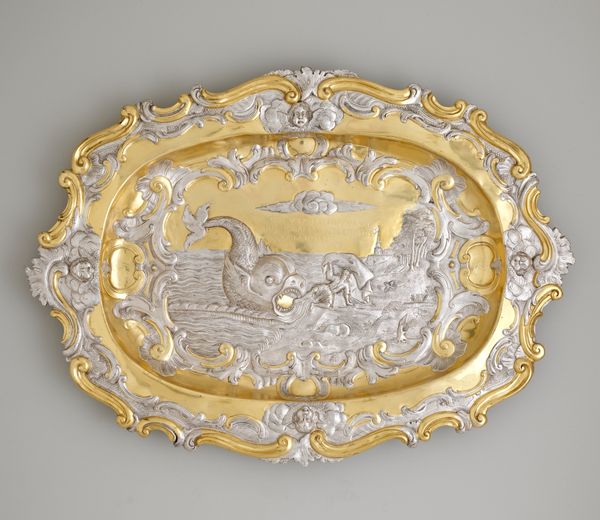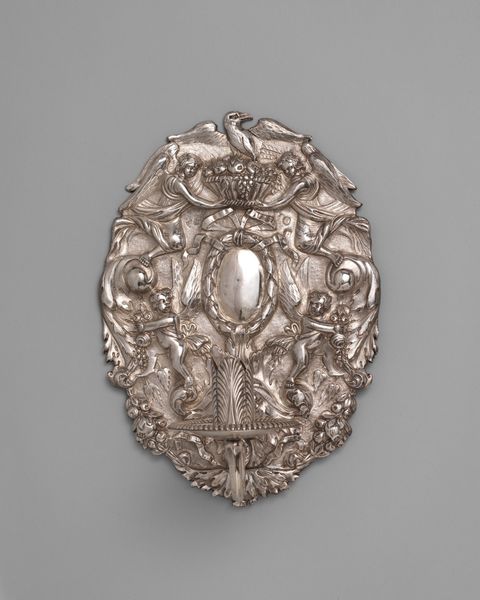
metal, relief, sculpture
#
neoclacissism
#
metal
#
relief
#
sculpture
#
decorative-art
Dimensions: 2 1/4 x 2 3/8 in. (5.7 x 6 cm)
Copyright: Public Domain
Editor: So this is "Escutcheon" made between 1805 and 1835. It's currently at the Metropolitan Museum of Art. It's rendered in gold metal relief, it seems. What strikes me is how ornate something functional can be; like there is something innately joyful about such a decorative thing whose function is simply to protect the keyhole. What do you see in it? Curator: Well, I see layers of meaning embedded in the imagery. The grape vine, so prevalent here, carries potent symbolism. Beyond the obvious association with wine, pleasure and celebration, grapes are heavily linked with both fertility and sacrifice; it even served as a covert symbol of Christian faith during periods of persecution. Doesn't the arrangement in a basket amplify notions of harvest, abundance, and domestic prosperity? What comes to your mind regarding this layering? Editor: I guess I never really considered all those connotations to be linked at once. Sacrifice, abundance – they seem contradictory, no? Curator: Perhaps, but contradiction can be a powerful tool for understanding cultural values. The Neoclassical period in which this piece was produced revered ancient Greece and Rome; think of Bacchus, the god of wine, who presides over states of ecstatic release, but always carries with him associations to mortality, life and death as sides of the same coin. Where does that leave you reflecting about this tiny portal? Editor: It leaves me thinking about how seemingly simple decoration, particularly Neoclassical decoration, speaks volumes about cultural memory. Like it whispers stories to those who understand the language of symbols, like grapes and vines; or, if ignorant, remains "just decoration". I guess art history makes us better "readers" of images and, thus, culture. Curator: Precisely. We have become interpreters of iconography to see visual stories anew. Therein lies the beauty.
Comments
No comments
Be the first to comment and join the conversation on the ultimate creative platform.
